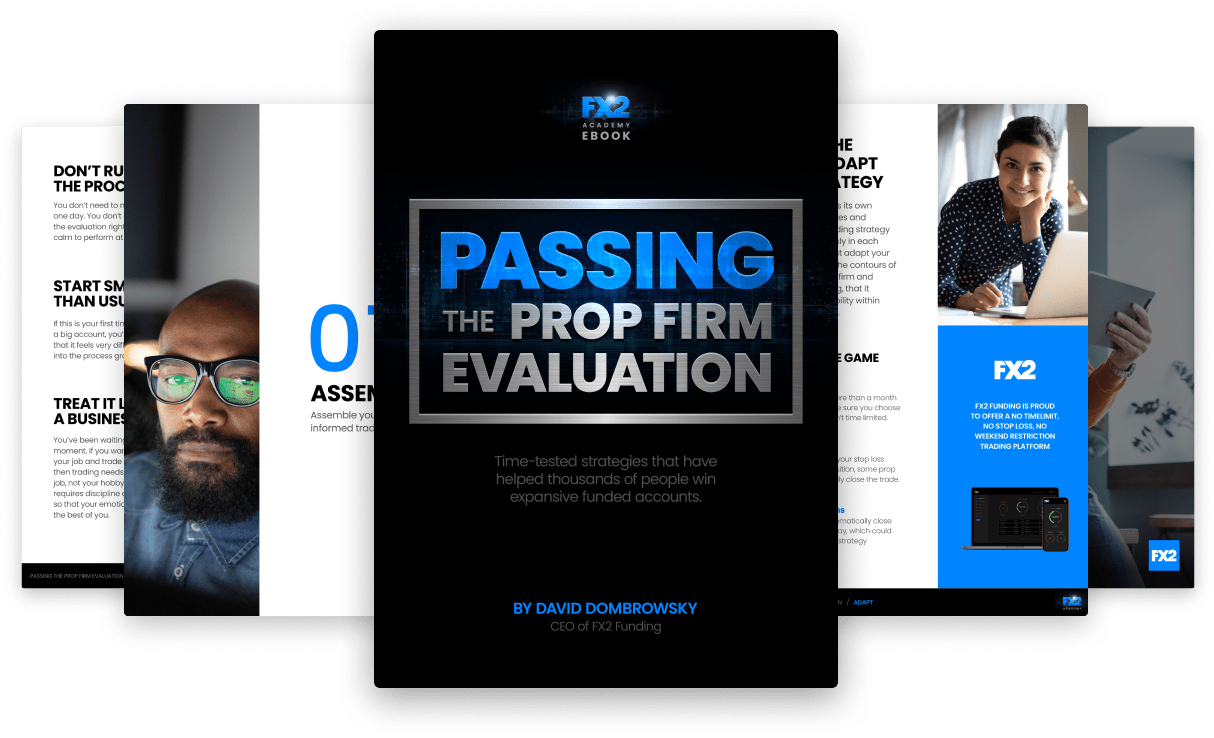Effective risk management is a cornerstone of successful trading. Without it, even the most sophisticated trading strategies can lead to significant losses. This article explores the fundamentals of trading risk management and presents key techniques to help traders protect their capital and achieve consistent returns.
Understanding Trading Risk Management
Trading risk management involves identifying, assessing, and prioritizing risks followed by coordinated efforts to minimize, monitor, and control the probability or impact of unfortunate events. It is essential for traders to manage their risk exposure to safeguard their investments and maintain a steady path towards profitability.
Defining Trading Risk Management
Trading risk management is the process of analyzing potential risks in trading activities and implementing strategies to mitigate them. It encompasses a range of practices designed to limit potential losses and protect the trader’s capital. These practices include setting stop-loss orders, diversifying investments, hedging positions, and continuously monitoring and adjusting trading strategies.
Effective risk management aims to achieve a balance between risk and reward, allowing traders to pursue profitable opportunities while keeping potential losses within acceptable limits.
Importance of Trading Risk Management
The importance of trading risk management cannot be overstated. Here are some key reasons why it is crucial for traders:
- Capital Preservation. Protecting trading capital is essential for long-term success. By managing risk effectively, traders can avoid large losses that could deplete their capital and force them out of the market.
- Consistency. Risk management helps achieve more consistent trading results by minimizing the impact of losing trades. This consistency is vital for building confidence and maintaining a steady growth in trading equity.
- Emotional Control. Effective risk management reduces the emotional stress associated with trading. Knowing that risks are controlled helps traders maintain discipline and stick to their trading plans, even during periods of market volatility.
- Maximizing Profits. By limiting potential losses, traders can preserve capital to take advantage of profitable opportunities. Effective risk management allows traders to stay in the game longer and maximize their profit potential over time.
- Adaptability. Markets are dynamic and constantly changing. Risk management strategies enable traders to adapt to new market conditions and adjust their positions accordingly, ensuring continued profitability and protection against unexpected events.
Key Risk Management Techniques for Traders
To navigate trading risks effectively, traders must implement a variety of risk management techniques. Here are some of the most effective strategies:
Setting Stop-Loss Orders
A stop-loss order is a predetermined order to sell an asset when its price reaches a specified level. This technique is crucial for limiting potential losses and protecting trading capital. Here’s how to effectively use stop-loss orders:
- Determine Stop-Loss Levels. Set stop-loss levels based on your risk tolerance and the volatility of the asset. For instance, you might set a stop-loss at 2% below the purchase price for a highly volatile stock, while a more stable asset might have a tighter stop-loss.
- Use Technical Indicators. Utilize technical analysis tools such as moving averages, support and resistance levels, and trend lines to determine optimal stop-loss points. These indicators help identify logical exit points based on market trends.
- Adjust Stop-Loss Orders. As a trade progresses and the price moves in your favor, adjust your stop-loss order to lock in profits. This trailing stop technique helps maximize gains while protecting against reversals.
For a detailed guide on setting stop-loss orders, you can explore the stop-loss order guide.
Diversification Strategies
Diversification involves spreading investments across various asset classes, sectors, and geographical regions to reduce risk. Here’s how to implement effective diversification strategies:
- Asset Class Diversification. Invest in a mix of asset classes such as stocks, bonds, commodities, and real estate. Different asset classes respond differently to market conditions, so this approach helps balance risk and return.
- Sector Diversification. Within a single asset class, diversify across different sectors. For example, in a stock portfolio, include sectors such as technology, healthcare, finance, and consumer goods. This strategy mitigates the risk of sector-specific downturns.
- Geographical Diversification. Invest in both domestic and international markets to protect against country-specific risks. Global diversification can enhance returns and reduce volatility by spreading exposure across different economies.
Hedging Techniques
Hedging involves taking positions in financial instruments that offset the risk of adverse price movements in an asset. Common hedging techniques include:
- Options and Futures. Use options and futures contracts to hedge against potential losses. For example, buying put options provides the right to sell an asset at a predetermined price, offering protection against price declines.
- Currency Hedging. For international investments, hedge currency risk by using currency futures or options. This protects against unfavorable exchange rate movements that could impact returns.
- Pairs Trading. Pairs trading involves taking long and short positions in two correlated assets. This strategy hedges market risk by profiting from the relative performance of the two assets rather than their absolute price movements.
Backtesting
Backtesting involves testing a trading strategy using historical data to evaluate its effectiveness. This process helps identify potential flaws and refine the strategy before applying it in live trading. Here’s how to conduct backtesting:
- Collect Historical Data. Gather historical price data for the assets you plan to trade. Ensure the data is comprehensive and covers various market conditions.
- Simulate Trades. Use the historical data to simulate trades based on your strategy’s entry and exit criteria. Record the results to analyze the strategy’s performance.
- Analyze Results. Evaluate key performance metrics such as win rate, average profit/loss per trade, and maximum drawdown. Identify patterns and areas for improvement.
- Optimize Parameters. Adjust the strategy’s parameters to improve its performance based on backtesting results. Be cautious not to over-optimize, as this can lead to curve fitting, where the strategy performs well on historical data but poorly in live trading.
Implementing Effective Risk Management Strategies
Effective risk management requires a comprehensive approach that includes assessing your risk tolerance and creating a detailed risk management plan. Here’s how to implement these strategies:
Assessing Risk Tolerance
Understanding your risk tolerance is crucial for developing a trading strategy that aligns with your financial goals and psychological comfort. Here are some steps to assess your risk tolerance:
- Evaluate Financial Situation. Consider your financial situation, including income, savings, and investment goals. Determine how much capital you can afford to risk without affecting your financial stability.
- Identify Investment Goals. Clearly define your investment goals, whether it’s capital preservation, income generation, or capital appreciation. Your goals will influence your risk tolerance and investment strategy.
- Assess Emotional Comfort. Consider your emotional comfort with risk and potential losses. Are you comfortable with the possibility of significant losses, or do you prefer more stable, lower-risk investments?
- Consider Time Horizon. Your investment time horizon can also impact your risk tolerance. Longer time horizons typically allow for higher risk tolerance, as there is more time to recover from potential losses.
Visit this article for more psychology trading tips.
Creating a Risk Management Plan
A well-structured risk management plan is essential for protecting your capital and achieving consistent trading success. Here’s how to create an effective risk management plan:
- Set Risk Parameters. Define clear risk parameters for each trade, including maximum acceptable loss, position size, and risk-reward ratio. These parameters should be based on your risk tolerance and trading strategy.
- Use Stop-Loss Orders. Implement stop-loss orders for every trade to limit potential losses. Ensure that your stop-loss levels are based on logical criteria, such as technical analysis or volatility.
- Diversify Your Portfolio. Diversify your investments across various asset classes, sectors, and geographical regions to spread risk and reduce the impact of any single asset’s poor performance.
- Regularly Review and Adjust. Continuously monitor your trading performance and adjust your risk management plan based on changing market conditions and personal circumstances. Regularly reviewing and updating your plan ensures that it remains effective and relevant.
Learning from Competitors' Strategies
Analyzing competitors' risk management strategies can provide valuable insights and help improve your own approach. Here’s how to learn from competitors and incorporate best practices into your trading strategy:
Analysis of Competitors' Risk Management Approaches
Studying the risk management techniques used by successful traders and financial institutions can offer valuable lessons. Here are some aspects to consider:
- Risk Management Frameworks. Review the risk management frameworks used by top traders and firms. Understand how they set risk parameters, manage position sizes, and use stop-loss orders to protect their capital.
- Diversification Strategies. Analyze how competitors diversify their portfolios across different asset classes and sectors. Identify effective diversification techniques that can help reduce risk and enhance returns.
- Hedging Techniques. Study the hedging strategies employed by successful traders. Understand how they use options, futures, and other derivatives to mitigate risk and protect against adverse price movements.
- Performance Metrics. Examine the performance metrics used by competitors to evaluate their risk management strategies. Consider metrics such as maximum drawdown, Sharpe ratio, and win-loss ratio to assess the effectiveness of their approaches.
Incorporating Best Practices into Your Trading Strategy
Incorporating best practices from competitors can enhance your risk management strategy and improve your overall trading performance. Here are some steps to implement these practices:
- Adapt and Customize. Tailor the best practices you learn from competitors to fit your unique trading style, goals, and risk tolerance. Customize these practices to align with your overall trading strategy.
- Test and Refine. Before fully integrating new risk management techniques into your trading strategy, test them using historical data and paper trading. This allows you to evaluate their effectiveness and make necessary adjustments.
- Continuous Improvement. Risk management is an ongoing process that requires continuous improvement. Regularly review your risk management strategy, incorporating new insights and best practices as you gain experience and as market conditions evolve.
Ready to implement best practices and elevate your trading strategy? Explore our funded accounts programs and take your trading to the next level. Explore our funded accounts programs.
Bottom Line
Effective risk management is crucial for successful trading, ensuring that even the most sophisticated strategies are protected from significant losses. By understanding and implementing key risk management techniques such as setting stop-loss orders, diversifying investments, and employing hedging strategies, traders can safeguard their capital and achieve consistent returns. Continuous monitoring, backtesting, and adapting to market changes are essential for maintaining a robust risk management plan. By learning from the best practices of successful traders, you can enhance your own approach and navigate trading risks like a pro. Ready to elevate your trading strategy? Start implementing these techniques today to protect your investments and maximize your profit potential.








